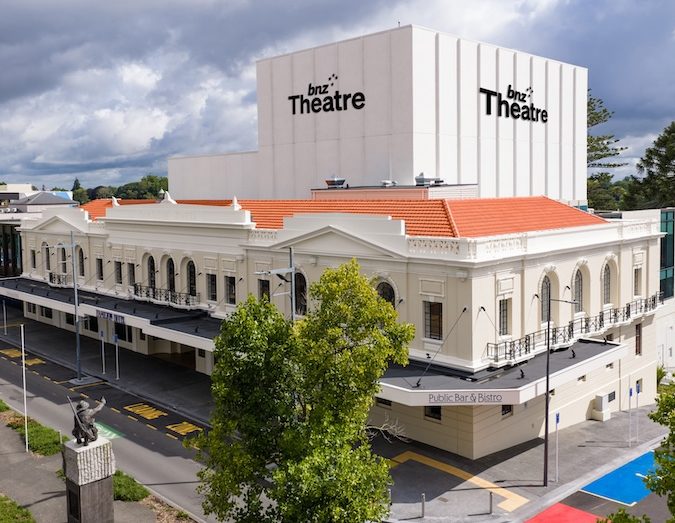
An exhibition showcasing a cultural story of Samoa’s third gender, Fa’afafine by Yuki Kihara, is coming alive thanks to artificial intelligence (AI) technology developed in New Zealand.
Interdisciplinary artist of Japanese and Samoan descent Yuki Kihara is representing New Zealand on the global stage with her exhibition ‘Paradise Camp’, bringing 12 photographs shot in Upolu Island, Samoa to life with the use of AI.
“I always wanted to produce an exhibition that prioritised and empowered the Fa’afafine [meaning ‘in the manner of a woman’] community which is a community that I belong to,” Kihara says.
TBWA\NZ’s Digital Art Network and the Arts Council of New Zealand Toi Aotearoa collaborated with Kihara to use AI to create a virtual experience that will “allow visitors to discover the deeper story behind each photograph”.
“I’m pleased to have had the members of the Fa’afafine community working both in front of and behind the camera as part of the production crew,” Kihara says.
The photographs emulate and are inspired by a number of paintings by post-impressionist artist Paul Gaugin who was heavily influenced by late-19th century Tahiti.
The exhibition is currently on display at the New Zealand Pavilion of the prestigious 59th International Art Exhibition, La Biennale di Venezia, in Venice.
Kihara says the piece was described by international media outlets such as CNN and the Financial Times as “powerful” and “triumphant”.
Read more: Bicultural design at Dunedin’s George St.
“As a result, we have high visitation for ‘Paradise Camp’ with ongoing requests for me to present floor talks.”
The use of AI will also allow those who are unable to visit to see the piece in a digital space.
Caren Rangi, Commissioner of the New Zealand’s presentation at the Biennale Arte 2022 and Chair of the Arts Council of New Zealand Toi Aotearoa, says that the collaboration came after the Arts Council became “acutely aware” of the need to pivot towards digital in response to Covid-19.
“Due to the pandemic, with people not necessarily being able to travel, we needed to find a way to help show her work, replacing the job that would usually be done by the attendant or curator,” says David Parkinson, General Manager of Digital and Innovation of Digital Arts Network.

He adds that the technology is coupled with Kihara’s art to “enable users to uncover the backstory of her art and create a broader experience”.
Rangi says a digital component is used to allow audiences to “watch and hear Kihara speaking to her research and creation process, and Paradise Camp themes and stories”.
At first, Kihara was “sceptical” of the use of the technology because she wasn’t sure “whether the technology would deliver the aesthetic experience” of being at La Biennale di Venezia.
But her opinions quickly changed after she realised that a virtual piece of art would help be accessible to a wide range of audiences.
Visitors will be able to scan a QR code which will open up the user’s camera and launches a lens through their phone that can recognise each painting. The lens will bring the photograph to life by opening up a web page that showcases video, artist commentary and a tool to compare Kihara’s photograph to the originals by Gaugin.
Parkinson says an AI algorithm was trained to recognise the art using the camera on a phone and once the image is recognised triggers a reaction to present additional information.
Alongside the pieces, Kihara has also included a supporting wall of newspaper cuttings, images, artifacts and personal items – which she dubs as a Vārchive.
The wall is used to help visitors see Kihara’s creative and research process, providing a living story to how ‘Paradise Camp’ came to be.
Parkinson says he sees “great value” in the use of AI to help people understand aspects of “why the art was created what it means for others, the artist and the viewer”.
“Essentially it enables broader knowledge sharing and a deeper interactive experience with the art.”
Digitisation of art is expected to go further, says Parkinson who has seen artists use and experiment with the technology through swapping mediums to create art.

“I think demand for digital art will continue to grow in the art market as the people who are brought up as digital natives want to consume art through that medium,” he says.
With the use of digital and AI technology, Parkinson says artists can “generate, orchestrate, manage and sell in this digital ecosystem without eventuating in the physical realm”.
“Most art these days is digitised, and the process is quite simple and done every day. Whether you’re taking a photo on your phone, googling Yuki’s art online or providing your art to a studio to sell on your behalf on their website – that’s digitising it.”
However, there are still many hurdles to cross in order for artists to become “comfortable and confident” to use and embrace the technology he says.
There are also concerns surrounding the safety of digitising art, with issues such as ownership and plagiarism rising in the digital space, making it very easy for someone to take an art piece, replicate it and sell it as their own.
Following the exhibition in Venice, Kihara’s ‘Paradise Camp’ exhibition will tour to the Powerhouse Museum in Sydney, Australia and the Auckland Art Gallery Toi o Tāmaki in New Zealand.




